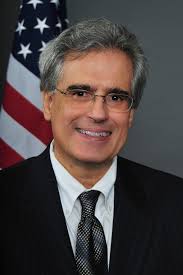(Bloomberg) — The feverish price swing for Treasuries last October, and repeated warnings from investors that there are liquidity problems in the U.S. bond market elicited a cautious plan from regulators last week: more study.
But one member of the U.S. Securities and Exchange Commission took exception with that circumspect approach, arguing that authorities know plenty already and its time for action. Luis Aguilar, a Democrat serving his final months as a commissioner at the agency, wants electronic trading of Treasuries to come under SEC rules designed for brokers and exchanges that trade stocks and corporate debt.

There can be no doubt that the current regulatory framework for the Treasury market should be reexamined in light of these new realities, Aguilar said in a Tuesday statement that indicated an attempt to prod bolder steps by regulators. The Treasury market now faces many of the same challenges that confront the equity market, including the ascendancy of high- frequency trading.
Treasury Report
In a report issued last Monday, agencies including the Federal Reserve, SEC and Treasury Department found no single cause for the rapid rise and fall of Treasury yields during a 12-minute period on Oct. 15, 2014. The group said some banks and high- frequency traders pulled back from posting orders during the turbulence, while other speed traders aggressively boosted their share of buying and selling.
Treasury officials and financial regulators said in their report that they will continue to review the evolution of the Treasury market and assess whether new rules are needed.
Electronic trading now accounts for more than 50 percent of trading volume in cash Treasuries, with some regulators expressing surprise at the finding. The effects of such trading is very unknown, its very new, Nellie Liang, the Feds director of financial stability policy and research, said Monday at a congressional round-table on bond trading.
Firms that dominate buying and selling using computer algorithms should come under the SECs oversight, Aguilar wrote in his statement, which was sent to reporters. The agency also should consider applying its rules to electronic systems, such as eSpeed and BrokerTec, that match buyers and sellers of Treasury bonds, he said.
Lacking Transparency
Aguilar drew a parallel to the SECs reaction after the May 6, 2010, flash crash, when the value of the stock market plummeted by nearly $1 trillion before quickly rebounding.
The agency responded by implementing circuit breakers to halt trading during rapid, precipitous price moves, something Aguilar said regulators should consider doing for the Treasury market. The government also should consider building a record of all quotes and confirmed trades, similar to the audit trail that exchanges oversee for stocks, Aguilar wrote.
The Treasury market, the largest and most liquid government securities market in the world, is now arguably the least transparent fixed income market in the U.S., he said.




